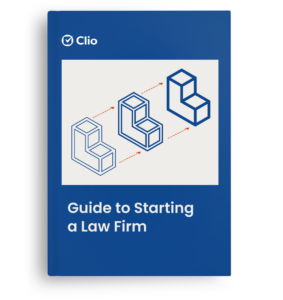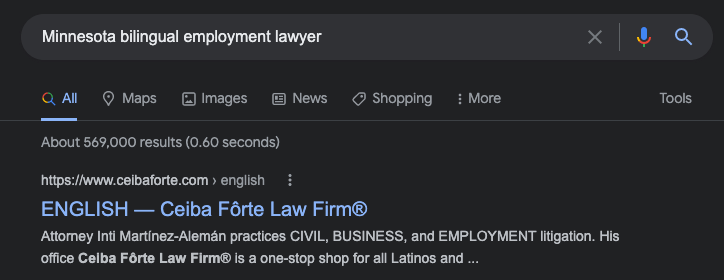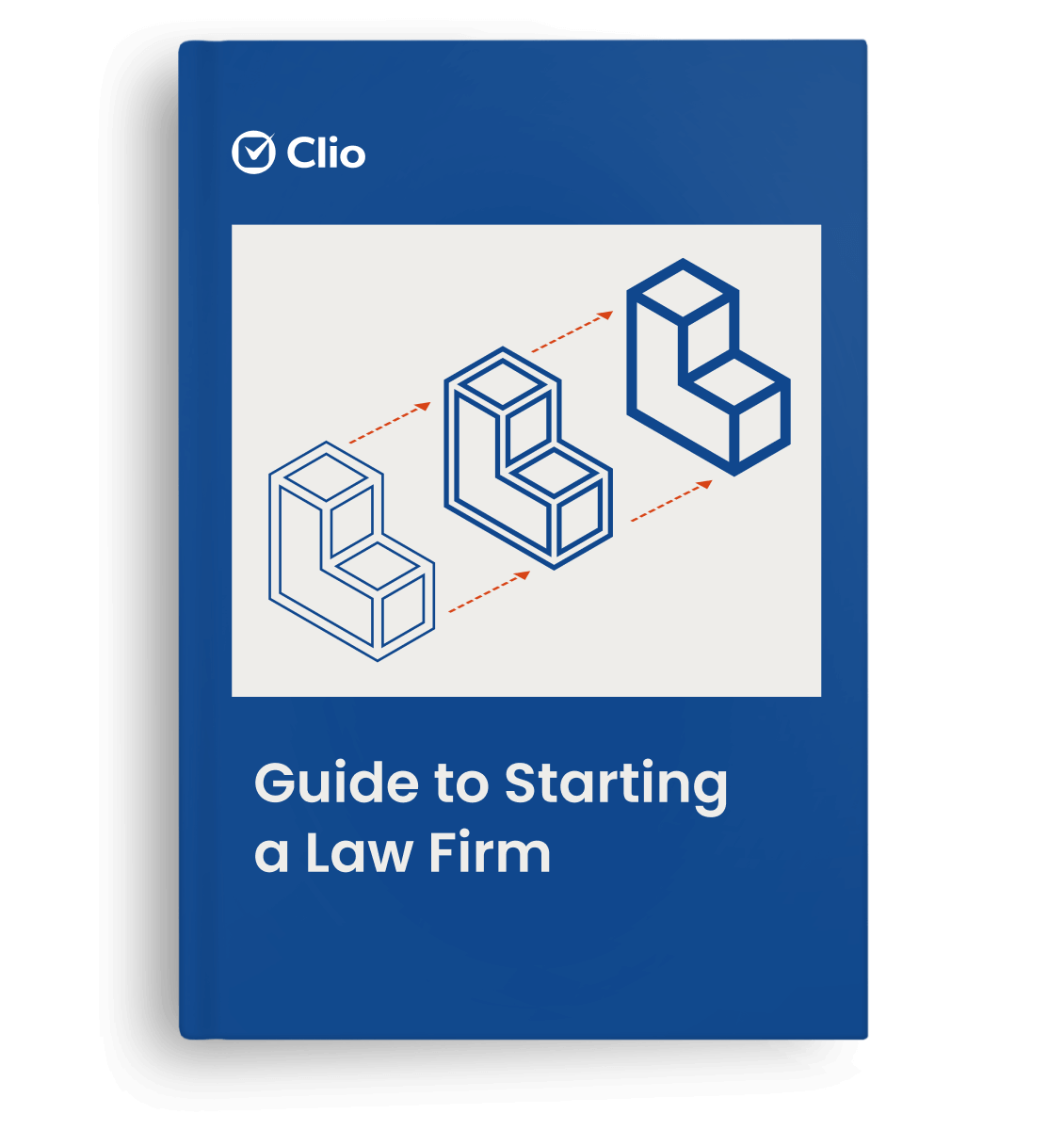Content marketing for law firms can play a vital role in enticing prospective clients. The caveat is—execution must be strategic and the content must be captivating. Below, we’ve outlined content marketing best practices and examples worth tailoring and testing at your firm.
Discover how AI can boost your law firm’s marketing efforts in our guide: Maximize Your Marketing Impact With AI: A Strategic Guide for Law Firms.
What is content marketing for law firms?
Content marketing for law firms is a broad topic, and could refer to several types of initiatives. In short, it’s the sharing of valuable content. For law firms and solo attorneys, content marketing for law firms involves sharing assets that make your current and prospective clients’ lives easier.
Content marketing for law firms is also a fine balance of strategy and creativity. You have to know your audience and what they need in terms of legal support. Once you have a clear understanding, it’s time to develop engaging, helpful content that puts their needs at the center.
Does content marketing work for lawyers?
With effective content marketing initiatives, lawyers can build brand awareness, increase business exposure, and ultimately generate more leads. In essence, content marketing for law firms supports growing your client base.
The secret is to create relevant, valuable content
Content marketing for law firms is actually all about the clients and what they need. Some examples of content you might share include videos that walk someone through creating a will, a divorce process flow chart, an article on what to ask a lawyer during an initial consultation, a TikTok about embracing technology as a lawyer, a worker’s compensation case calculator, and the list goes on. This will be dependent on your practice area and target audience. As highlighted in our legal marketing blog, it’s critical to research your audience and know who they are.
Ideally, the best content marketing for law firms will directly address your clients’ pain points. The best content will fulfill a need or desire while simultaneously positioning you as a trusted source for useful information and expertise. It’s not easy, but it is effective! Further down we outline four simple steps to creating content worth sharing.
You may like these posts
A content marketing plan vs. content strategy
A content marketing strategy, like a general marketing strategy, outlines your goal. It’s a strategic approach enabling you to entice and engage a clearly defined audience. And, ultimately, create profitable client action.
A content marketing plan is how you’re going to achieve your strategy. Using our content creation tips below, you’ll have everything you need to create a content marketing plan for your law firm. With all the moving parts involved in content marketing for law firms, creating a plan will help you stay organized.
Finding topics for content marketing for law firms
A good way to start your search for content ideas is to think about the types of cases you handle. What kinds of questions do prospective clients usually ask? What information would be useful to these clients?
For example, if you are a personal injury law firm that represents individuals injured in car accidents, consider what someone involved in a car accident would want to know in order to handle the aftermath, such as “Do I need a lawyer after a car accident?”
When people have legal questions, one of the first places they look is online. If you have a piece of content that addresses the common questions that people ask, this can be a good way to attract potential clients to your firm.
Another way to search for topics for content marketing for law firms is to develop audience personas. With some areas of practice, you might find that certain types of clients have many things in common. Consider whether those interested in a particular topic are more likely to be male or female, if they tend to come from a specific age group, or if they tend to be people with certain types of careers or economic concerns. The more you know about your intended audience, the more likely you’ll be to choose topics and produce content that is relevant to them.
Keyword research is essential
If your content will be posted online, you’ll want to optimize it for search engines. Optimized content will have a better chance of ranking in the search results for relevant keywords, meaning that potential clients will be more likely to find your law firm when looking for answers to their legal questions.
One of the most important parts of search engine optimization (SEO) is finding the right keywords. For every topic that you could write about, there are specific keywords and phrases that people may use when they search for information. By using these keywords within your content, you can make your articles and pages easier to find.
Keyword research is pivotal when it comes to content marketing for law firms, as your clients are likely looking for help quickly. An even more compelling argument—users seldom venture past the first page of search results. In short, if there’s one takeaway you get from this section, let it be this: Your marketing strategy must support getting your firm’s content on page one.

For example, your clients might be searching “Minnesota bilingual employment lawyer” or “attorney who speaks Spanish in Minnesota”. In some cases, when it comes to content marketing for law firms, the keywords might be obvious. Even so, you will want to do some research to confirm which keywords get the most searches. There are different methods and strategies that can be applied to keyword research, but it’s worth starting with the most common keyword research tools first.
For a more detailed introduction to keyword research and SEO for law firms, see Clio’s quick guide to law firm SEO.
4 Steps to creating content worth sharing
Once you’ve thought about what information your potential clients are looking for and have found keywords that match those queries, you’ll need to get to work creating exceptional content.
The key to content marketing for law firms is to provide valuable, useful, and ideally actionable information for your readers so that they’ll read your content, share it with their friends, and continue coming back for more.
For example, consider the topic suggestion from earlier: “What to do after a car accident.” Useful formats might be a list of steps to take, an email newsletter with three tips on ensuring the best outcome for a case, or a downloadable guide that uses plenty of examples to engage the audience.
Here are a few more tips for creating captivating online content:
- Keep it simple: The average newsletter is written at an 11th grade reading level. Your potential clients are (likely) not lawyers, but they are looking for information that’s easy to digest. Keep your sentences short, use an active voice, and choose clarity over cleverness.
- Be specific and comprehensive: Don’t pad your content with unnecessary fluff, but pack as much useful information as possible into your posts to help potential clients. For example, if you’re writing about what to do after a car accident, don’t stop at telling your clients to gather as much information as possible about the event: Provide a checklist of what they need to look for.
- Make it skimmable: Most visitors will only read 20% of the content on your web page. They’re skimming, not reading, so use bolded titles, bullet points, and lots of white space to make it easy to take in the information you’re providing.
- Avoid language that dates your content: Rather than relative references such as “last year” or “on Friday,” say “in 2017” or “On Friday, January 13.” Also, avoid talking about future events such as conferences or upcoming webinars—they’ll soon be in the past, and for people viewing your content months after publication, those references will appear outdated.
These tips apply to blog posts, but the same ideas apply to videos, infographics, or other types of evergreen content. Focus on making the content valuable, useful, and easy to digest, and you’ll have content your audience keeps coming back for.
Updating and republishing content the right way
Even the best content isn’t immune to the test of time. Laws change, news articles you may have referenced become outdated, and experts you reference may change positions or careers. Even if you do your very best to stick to general terms and examples, a page you link to on an external site could be archived—or the page could shut down.
If your article on what to do after a car accident becomes outdated, people will stop reading it, which isn’t something you want!
To ensure the content you’ve put so much effort into continues to attract visitors, you’ll need to keep it up-to-date. Regularly review your content on a schedule that works for you (consider doing this yearly, or every six months), making any corrections as needed. For example:
- Replace any references to old news articles with more up-to-date, relevant events. For example, if a study on a subject was released four years ago, check whether there’s a more recent version.
- If it’s a written piece, test all links to make sure they still work, and haven’t been redirected to a piece of content that’s now irrelevant.
- Keep an eye out for changes that might affect your content, and update accordingly even if it’s not in your regular cadence to do so. For example, if a law changes that affects what you talk about in your post on what to do after a car accident, update that content ASAP.
Finally, once your content has been updated, share it again! Republish posts on your blog, put videos out again on your YouTube channel, and promote the content as you would have when it first went out. Many potential customers may have seen your original post, but they may value the update and want to know about it, and many others may be seeing it for the first time.
When it comes to content marketing for law firms, Republishing your updated content can provide plenty of value to your potential clients. Be sure to set aside time and resources to promote your updated work.
The importance of repurposing content
There’s a reason many of the world’s leading marketers make repurposing content a part of their strategies. When you repurpose content, you get more out of the time and effort that went into developing the original piece. And when you develop evergreen content, you have a resource that lends itself well to repurposing.
Here’s what repurposing content might look like:
- Taking written content, such as blog posts, and turning these pieces into video content or visual content such as infographics.
- Repurposing a webinar by writing a blog post summarizing the information covered in the recording.
- Pull short facts and quotes from articles and turn them into social media posts.
- Update older blog posts and highlight key takeaways in an email campaign or newsletter series.
Everyone consumes content differently. It might take some testing to determine the specific content format your current and prospective clients prefer. And it will likely be a mix, and change over time. Your strategies for content marketing for law firms should be flexible enough to allow for this.
As with content marketing for law firms, using Clio can level up your firm. Learn more about how law firms use Clio by watching our on-demand webinar.
The value of content marketing for law firms is infinite
With an effective content marketing strategy, you can establish your law firm as a trusted source of information that many will turn to when they need to learn about your practice area. Great content can raise the profile of your business, resulting in more clients contacting your firm when they need advice, and help you build strong, lasting relationships with your future clients.
We published this blog post in January 2018. Last updated: .
Categorized in: Marketing









